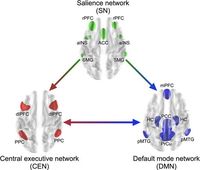Transcranial alternating current stimulation (tACS) is making waves as an innovative, non-invasive method to boost our cognitive abilities, particularly our working memory. Recent research conducted at Korea University explores how tACS can modulate brain networks involved in memory tasks, offering valuable insights for enhancing cognitive performance.
Working memory is fundamental to our daily lives, allowing us to hold and manipulate information over short periods. The new study investigates the effects of tACS on this cognitive function by applying oscillatory currents with specific phase lags between two key brain networks: the central executive network (CEN) and the default mode network (DMN). The well-coordinated interaction of these networks has been established as central to effective cognitive control.
The researchers conducted their experiments with 26 healthy participants, utilizing functional magnetic resonance imaging (fMRI) to monitor brain activity during the trials. They applied tACS with two types of phase lags: 45 degrees, which is thought to facilitate cognitive performance, and 180 degrees, which could inhibit performance. These differing phase lags were chosen based on prior studies indicating their potential effects on cognitive tasks.
During the experiment, participants undertook Sternberg working-memory tasks aimed at evaluating their ability to retain and recall information. Results showed significant variations based on the phase of stimulation. For those under the 180-degree phase condition—described as ‘anti-phase’—participants’ reaction times were noticeably slower compared to both the no-tACS condition and the 45-degree phase, which encouraged quicker responses. This indicates the significant influence of brain stimulation timing on cognitive performance.
Brain activation analysis revealed intriguing patterns as well, particularly within the posterior cingulate cortex (PCC)—a part of the DMN. During the 180-degree tACS condition, researchers observed heightened activation of the PCC relative to the 45-degree stimulation condition. This implies the role of the PCC is not merely passive but actively engages differently based on the neurostimulative phase applied.
The study also performed subgroup analyses, stratifying participants based on their initial performance speed—termed the Fast Group and Slow Group. Those categorized as faster performers exhibited substantial differences in brain activation under the various tACS conditions compared to their slower counterparts, underscoring how individual differences can impact the effectiveness of neuromodulation techniques.
Notably, the tACS application did more than just affect response times; it selectively activated key brain structures implicated in memory tasks, particularly the right hippocampus. This unanticipated finding suggests the possibility of tACS acting upon deep brain structures, which typically remain out of the reach of conventional non-invasive stimulation methods, highlighting the technique's potential for cognitive enhancement.
Authors wrote, "Our observations provide a neurophysiological basis for neuromodulation and a feasible non-invasive approach to selectively stimulate..." This supports the promising perspective of tACS not only as a cognitive tool but also as part of therapeutic protocols for conditions involving memory deficits.
The research emphasizes the necessity of considering how stimulation phase relationships can be optimally adjusted to refine cognitive task performance. By utilizing specific phase lags for targeted brain regions, tACS could facilitate significant improvements across varying cognitive functions.
While these results present exciting potential, the authors caution about the variability of tACS effects based on individual performance levels—suggesting future research should continue exploring these differences to fine-tune neuromodulation methodologies.
The findings are indicative of the broader possibilities within the field of non-invasive neuromodulation, which stands at the forefront of bridging gaps between cognitive neuroscience and practical cognitive enhancement strategies. With more research, methods like tACS could redefine our approach to enhancing cognitive capabilities and managing cognitive impairments, paving the way for future innovations.

